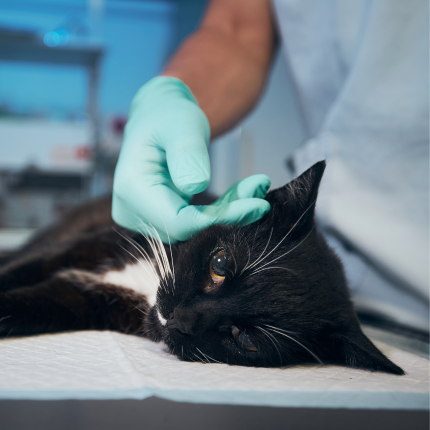Can Cats Get Fevers?

Cats can develop fevers, often a natural part of their immune response. The typical body temperature for a cat ranges from 100 to 102.5 degrees Fahrenheit (37.7 to 39.2 degrees Celsius). A fever is indicated when a cat’s temperature rises above 102.5 degrees Fahrenheit. An elevated temperature usually signals that the cat’s immune system is actively fighting off an infection or other health issues.
When a cat is unwell, its immune system sends signals to the brain to raise the body’s internal temperature. This increase, known as a fever, helps to activate immune cells and can damage harmful infectious cells. It’s essential to differentiate fever from hyperthermia, which occurs when the body overheats due to external heat sources or overexertion. Hyperthermia can lead to dangerously high body temperatures, reaching 106 degrees Fahrenheit or more. Unlike dogs, cats typically do not engage in excessive physical activity that could lead to overheating, but leaving a cat in a hot car can put them at risk of hyperthermia.
Causes of Fevers in Cats
Cat fever can be triggered by various factors, often related to underlying conditions. Common causes include:
- Infections: Bacterial, viral, or fungal infections.
- Inflammation: Related to various health issues.
- Trauma: Injuries or wounds.
- Cancer: Certain types of tumors.
- Vaccine Response: Temporary fever post-vaccination.
- Immune-Mediated Diseases: Conditions where the immune system attacks the body.
- Certain Medications: Reactions to specific drugs
- Parasitic Diseases: Infestations or infections.
- Fever of Unknown Origin: Sometimes the cause is not immediately apparent.
Symptoms of Fevers in Cats
Cats are known for hiding their discomfort, but attentive cat owners may notice subtle signs. Symptoms of fever in cats can be varied and include:
- Lethargy
- Loss of appetite
- Shivering
- Hiding or withdrawing
- Reluctance to move
- Stiff or altered gait
- Decreased grooming
- Rapid breathing
How to Take a Cat’s Temperature
Relying on a cat’s ear temperature is unreliable for detecting a fever. The most accurate way to determine if a cat has a fever is to take a rectal temperature using a digital thermometer.
If the thought of taking your cat’s temperature rectally is daunting, there are alternative methods, though they are generally less reliable:
- Axillary Temperature: Measured in the armpit, it is usually about one degree Fahrenheit lower than the actual body temperature.
- Ear Thermometers: Veterinary-specific models can provide helpful trend data, though they are less accurate than rectal measurements.
- Non-Contact Infrared Thermometers: These are not recommended for cats, as studies have shown their results to be unreliable.
Caring for a Cat with a Fever
If your cat has a fever, providing extra care can aid in their recovery:
- Hydration: Ensure your cat has access to plenty of fresh water to prevent dehydration.
- Nutrition: Monitor your cat’s food intake and encourage eating. Offer canned food if your cat is reluctant to eat dry kibble. Consult your vet if your cat refuses food entirely.
- Follow Vet Instructions: Adhere to your veterinarian’s treatment plan. Administer medications as prescribed, and consult the vet if you have trouble.
- Avoid OTC Medications: Do not give over-the-counter human medications to cats, as they can be toxic. Acetaminophen (Tylenol) is particularly harmful.
- Provide a Quiet Space: Create a calm environment to help your cat rest. Avoid excessive temperature checks unless directed by your vet.
These steps will help ensure your cat receives the care they need and recovers comfortably from a fever.

Featured Articles

Greebles and Cats: The Origin and the Meaning
You may have seen an internet sensation concerning cats labeled “greebles.” Feel out of the loop? We’re here to help you. In 2019, Reddit user /user/literallyatree commented on a Reddit post about a cat that looks like it’s trying to slap a ghost. This user commented: “My family calls things…

Why Do Cats Roll Over Into Their Backs But Not Let You Touch Their Bellies?
It’s common knowledge dogs love to have their tummies rubbed when they freely lay down before you and roll onto their backs. But, if you’re also familiar with cats, you know that when they roll onto their backs with their bellies exposed, rubbing the belly will most likely result in…

The Odd-Eyed Cat (AKA Heterochromia)
Cats are already beautiful and fascinating creatures, but people are bound to take notice when they have something as captivating as two different colored eyes. Odd-eyed cats always have one blue eye paired with either a green, yellow, or brown eye. This form of heterochromia occurs in other animals, including…
